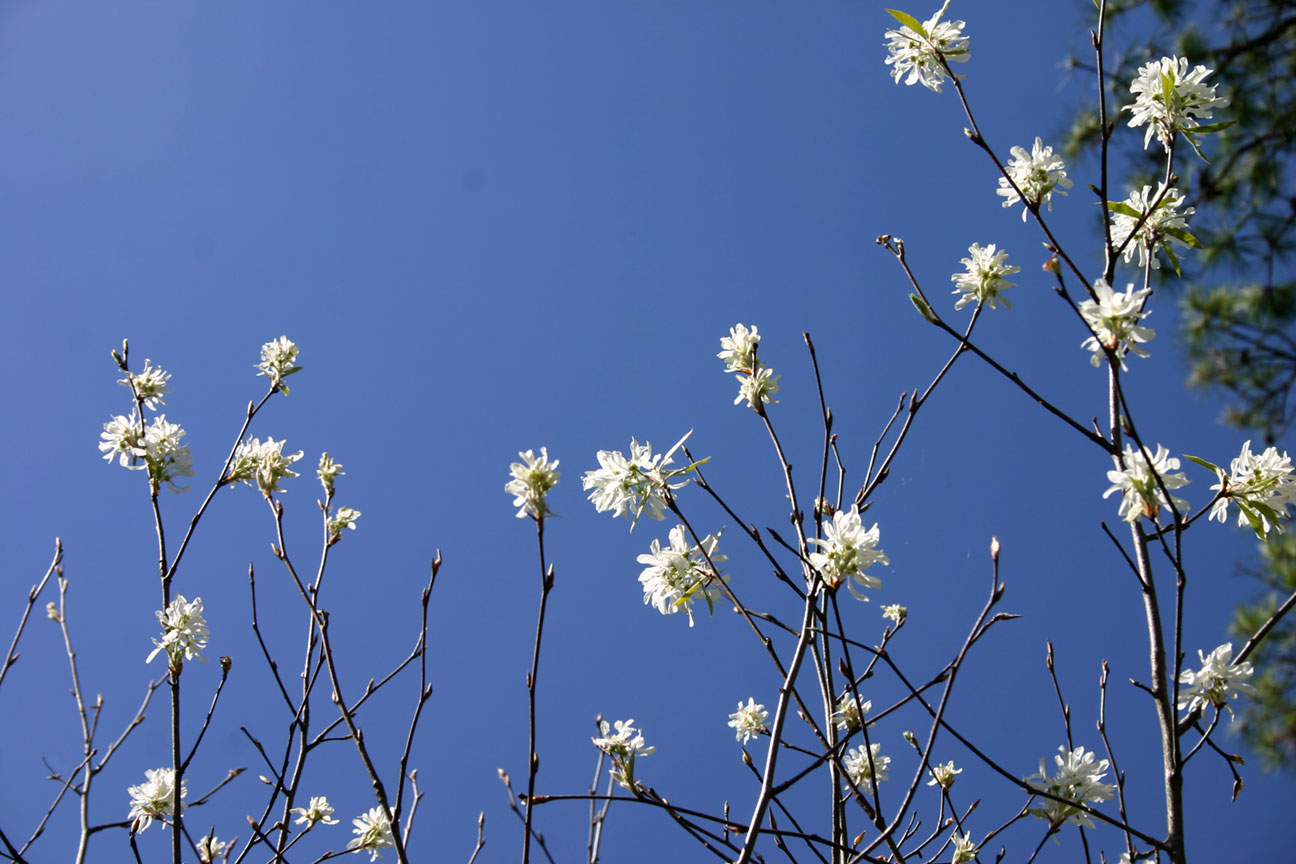Sarvisberry
by Joshua Heston
EDITOR’S NOTE: The small, unassuming sarvisberry tree has a rich history in the Ozark hills, a history which details the important, at-times poetic, relationship between man and nature.
The article below is a reprint, permitted from the College of the Ozarks’ Ralph Foster Museum and for that, I am quite grateful.
It was written by Carson Brewer in his 1998 book, Yarn Spinners. I’m going to see if I can get a copy — and recommend you do the same. This is good readin’…

FROM YARN SPINNERS:
“Sarvis” is what the early mountain people called it. It was “Sarvis” because it blooms about the time circuit riding ministers came into the mountains after each hard winter to perform whatever service (or in Old English, “sarvises”) needed to be performed.

There were funerals for those whose hasty burials had been accompanied by scant ceremony. There were wedding sarvises for some who had been waiting all winter to get married.
There is the typical handed-down story of the man, tears streaming down his cheeks as he listens to the funeral preached for his old wife, while his new wife sits beside him.

It may sound funny now. But it wasn’t funny then to the man who had lost his wife and mother of his half-dozen young children. He had to find another mother for them quickly.
Serviceberry, Sarvisberry, Sarvise Tree, Shadbush, Juneberry, Mespilus, Grape Pear, Swamp Sugar Pear, Bloody Choke Cherry… there are a lot of regional variations in the common names for the Amelanchier.

The name amelanchier is said to derive from the honey-tasting berries. These berries are actually quite good in preserves but are rarely used because they are so quickly eaten by birds. The names containing “shad” apparently refer to the flowers of the plant, which happens when the shad are running
The wood was prized by the Cree for making arrows.
— “SERVICEBERRY: FIRST SIGN OF SPRING’S ARRIVAL BY CARSON BREWER, YARN SPINNERS, 1998.
ARTICLE REPRINTED WITH GRATEFUL PERMISSION FROM THE RALPH FOSTER MUSEUM.
— originally published on StateoftheOzarks, APRIL 9, 2008

SARVISBERRY (Amelanchier arborea)
SIZE: 30 to 40 feet tall; leaves 2 to 5 inches long. WHAT TO LOOK FOR: leaves elliptical, coarsely toothed, hairy when young; flowers white in drooping clusters (very early spring); fruits berrylike, red to dark purple. HABITAT: hillsides, ravines, edges of streams and moist woods.
— page 313, Wernett, Susan J., et al. North American Wildlife. The Reader’s Digest Association, Inc., 1986.










excellent article on service berry – would have liked a little more history, uses by natives, even how it came to grow here, etc, but interesting and i thank you. could i sign up for your newsletter? i was hatched in the Ozarks but now live in Asia.